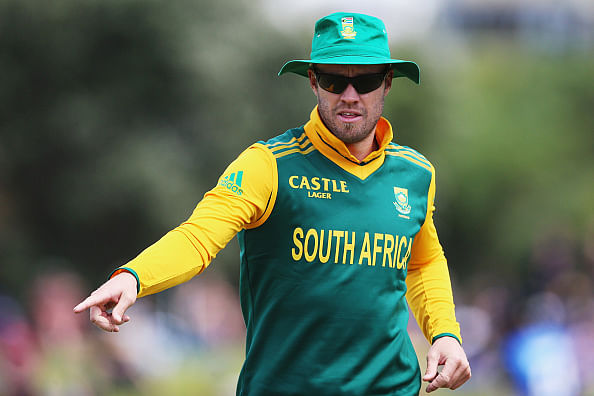
Team History at Cricket World Cup – South Africa (1992-2011)
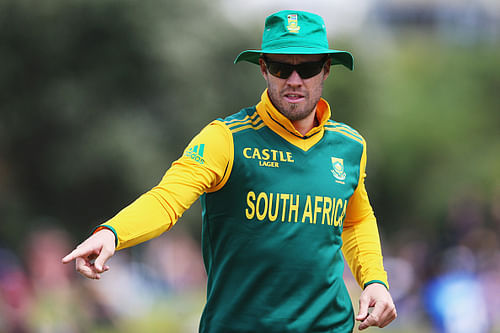
The Proteas were suspended from the ICC from 1970 to 1991 due to apartheid, which meant they finally made their World Cup bow in the fifth edition of the tournament in 1992.
Blessed with many talented and hard-working players, the South African side has almost always impressed in every edition of the World Cup they’ve participated in, but a combination of bad luck, inability to handle pressure and superlative performances by opponents has meant that the team doesn’t have even a single World Cup final appearance.
The side has entered into the tournaments as one among the top favourites to win the title, but always managed to only flatter to deceive. The terms “chokers” and “underachievers” are synonymous with them at the Cricket World Cups.
History at the World Cup
It’s often been the case of so-near-yet-so-far for the Proteas in World Cups. Statistically the team has a fairly good record in the event, but what stands out is the fact that they haven’t won a single trophy (or even made an appearance in a final) despite the talent at their disposal.
In its first World Cup, in 1992, the side, led by the experienced Kepler Wessels, put up a decent show in the round-robin stage, but were controversially denied a place in the final due to an absurd rain rule. In the 1996 edition held in the Indian sub-continent, the Hansie Cronje captained side was considered to be among the favourites; however, after winning all their group stage games, a Brian Lara masterclass knocked them out in the quarter-finals stage.
| Matches | Wins | Losses | Ties | Win % |
| 47 | 30 | 15 | 2 | 63.83% |
| Year | Host Nations | Performance |
|
1992 |
Australia, New Zealand | Semifinals |
| 1996 | India, Pakistan, Sri Lanka | Quarterfinals |
| 1999 | England, Scotland, Wales, Ireland, Netherlands | Semifinals |
| 2003 | South Africa, Zimbabwe, Kenya | Group stage |
| 2007 | West Indies | Semifinals |
| 2011 | India, Sri Lanka, Bangladesh | Quarterfinals |
South Africa were again considered among the top contenders in England in 1999, and the team – inspired by some wonderful performances from Lance Klusener – justified that by reaching the semi-finals, where they were knocked out after a heart-breaking tie against the Aussies (due to Australia being placed higher than South Africa in the Super Six table).
The 2003 edition was hosted by South Africa, and the team hoped that the home advantage will help them go all the way and win the title. However, the reverse happened and rain came back to haunt them: a mess-up with Duckworth-Lewis scores meant that their match against Sri Lanka was tied, a result that knocked them out in the group stage.
The side got another chance for redemption in 2007 in West Indies, and despite not being at their best, they managed to reach the semi-finals stage for the third time in their World Cup history. This time, however, they could not blame bad luck or a choke for their exit as the side was totally outplayed by the eventual winners Australia in the semi-final.
The World Cup returned to the sub-continent in 2011, and South Africa had a near repeat of their previous performance in 1996. After topping the tables in the group stage, the Proteas were knocked out by the Kiwis in the quarter-finals on the back of inspired performances from Jesse Ryder and Jacob Oram.
The side led by AB de Villiers will be keen to set the record straight in the 2015 edition of the World Cup in Australia/New Zealand and hope to win the elusive World Cup trophy for their country.
Best Performance: Semi-finals in 1992, 1999 and 2007
Worst Performance: Group stage exit in 2003
Favourite Opponents in World Cups: India and Pakistan
| Opponent | Matches | Wins | Losses | Ties | Win % |
| India | 3 | 3 | 0 | 0 | 100% |
| Pakistan | 3 | 3 | 0 | 0 | 100% |
Least Favourite Opponents in World Cups: Australia and New Zealand
| Opponent | Matches | Wins | Losses | Ties | Win % |
| Australia | 5 | 1 | 3 | 1 | 20% |
| New Zealand | 6 | 2 | 4 | 0 | 33.33% |
Best Captains: Both Hansie Cronje and Graeme Smith have led the team to a semi-final and quarter-final appearance each in the 2 World Cup editions that they captained the side, with the now-disgraced Cronje having a better captaincy record statistically.
| Name | Editions captained | Matches | Wins | Losses | Ties | Win % |
| Hansie Cronje | 1996, 1999 | 15 | 11 | 3 | 1 | 73.33% |
| Graeme Smith | 2007, 2011 | 17 | 11 | 6 | 0 | 64.71% |
Top Performers
Jacques Kallis
1148 runs at 45.92 avg with a best of 128*; 21 wickets at 43.04 avg with a best of 3/26; and 13 catches from 36 matches
The all-rounder has been the Proteas’ best player in the World Cups, and his presence will be sorely missed by the side in the 2015 edition. A solid and reliable contributor with the bat, ball and also in the field, Kallis made his World Cup debut in 1996 and was a key member of the side in 1999, 2003, 2007 and 2011 editions of the event. He is also the country’s leading run-scorer in the tournament.
Allan Donald
38 wickets at 24.02 avg with a best of 4/17 from 25 matches
The pacer’s World Cup career highlight will be him being run out to tie the game in “that” semifinal, but Allan Donald has also been South Africa’s best bowler and leading wicket-taker in the tournament. The spearhead of the bowling attack from 1992 to 2003, Donald has put in many match-winning spells for this side.
Lance Klusener
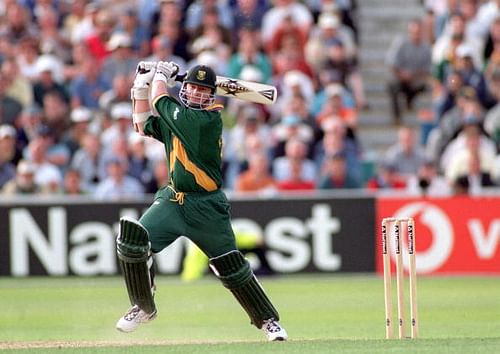
372 runs at 124.00 avg with a best of 57; 22 wickets at 22.13 avg with best of 5/21 from 14 matches
The player of the tournament in 1999, Lance Klusener was the pivotal member for the Proteas with many match-winning knocks and crucial wickets. Nicknamed “Zulu”, the southpaw holds the record for the highest batting average in World Cup history (for a batsman with at least 10 innings) and was dismissed just twice in 6 innings in the 1999 World Cup.
Memorable Matches
South Africa vs Australia, 1999 World Cup semi-final on 17 June 1999 at Edgbaston, Birmingham
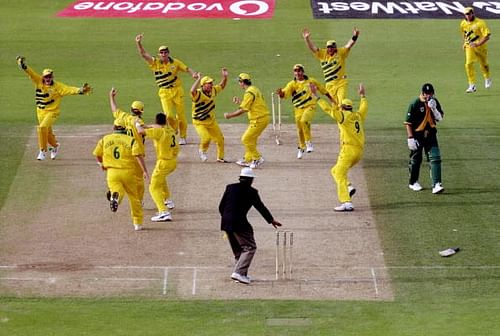
The teams met for the second time in five days, after a Steve Waugh inspired win by the Aussies in the Super Six where he was famously dropped by Herschelle Gibbs. Keen for a revenge, the Proteas were also looking to book their first ever appearance in a World Cup final.
Cronje’s decision to bowl first after winning the toss was justified by his bowlers as Allan Donald and Shaun Pollock took 9 wickets between them to dismiss the Aussies for a meagre 213. The South Africans began their chase well with Kirsten and Gibbs putting on 48 for the first wicket before Shane Warne derailed the run chase with quick wickets.
Kallis and Rhodes tried to repair the damage with a good partnership, but a flurry of wickets left South Africa requiring 9 from the last over with only one wicket remaining. But with the player of the tournament Klusener at the crease, the Proteas fancied their chances. Klusener hit Damien Fleming for consecutive boundaries on the first two deliveries of the over, leaving the batting side with one more run required to win. The third delivery of the over was a dot ball, and then madness followed.
Klusener hit the fourth ball straight to Mark Waugh at mid-off and set off for a run, while the non-striker Donald didn’t respond. Both batsmen were at the bowler’s end, and the Aussies were able to run-out Donald; as a result, the match was tied and Australia progressed to the final.
South Africa vs India, 2011 World Cup group stage match on 12 March 2011 at VCA Stadium, Nagpur
It was one of those rare games when a choke happened and the culprit wasn’t South Africa but the opponent.
Batting first after MS Dhoni won the toss, India looked set to post a massive total after a century from Sachin Tendulkar and fine fifties from Virender Sehwag and Gautam Gambhir left India in a commanding position with the scoreboard reading 267/1 in the 40th over. But Dale Steyn triggered a batting collapse, and India could only manage to put up a score of 296 (which was a below-par score on the wicket).
Half-centuries from Hashim Amla, Kallis and De Villiers kept the South African run-chase going smoothly, before wickets by Harbhajan Singh and Munaf Patel triggered fears of yet another choke. But Faf du Plessis held one end up, and Robin Peterson hit Nehra for a six and two boundaries in the final over to win the game by 3 wickets with 2 balls to spare.
South Africa vs Pakistan, 1992 World Cup round-robin match on March 8, 1992 at The Gabba, Brisbane
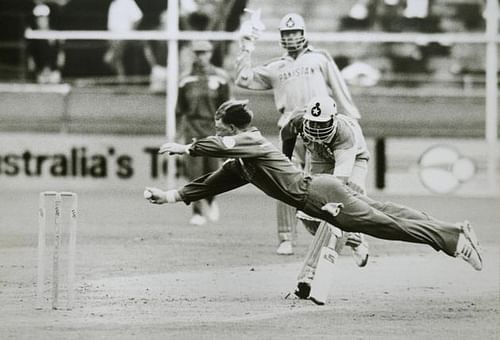
A close game was made memorable by one of the finest acts of play in the World Cup history as Jonty Rhodes launched himself flying into the stumps to run-out Inzamam-ul-Haq and turn the match in South Africa’s favour.
The Proteas had scored 211 from 50 overs, with Andrew Hudson top-scoring with 54. Pakistan seemed to be well-set to chase the target and were at 135/2 in the 31st over. Inzamam missed a heave to leg off the bowling of Brian McMillan and set off for a leg bye, despite the non-striker Imran Khan stopping after taking a couple of steps. This was the moment when Rhodes decides to leave a permanent mark in the game’s history as he ran in from backward point, picked up the ball with his right hand, ran towards the wickets, and then spectacularly threw himself at the stumps with his body parallel to the ground and both feet in air, to run-out Inzamam.
After Inzamam’s dismissal, Pakistan chase fell apart and South Africa won the game by 20 runs. Rhodes’ run-out of the batsman was best described in a newspaper headline the following day as “Is it a bird? Is it a plane? No, it’s Jonty!”, and the player went on to revolutionize fielding in world cricket.